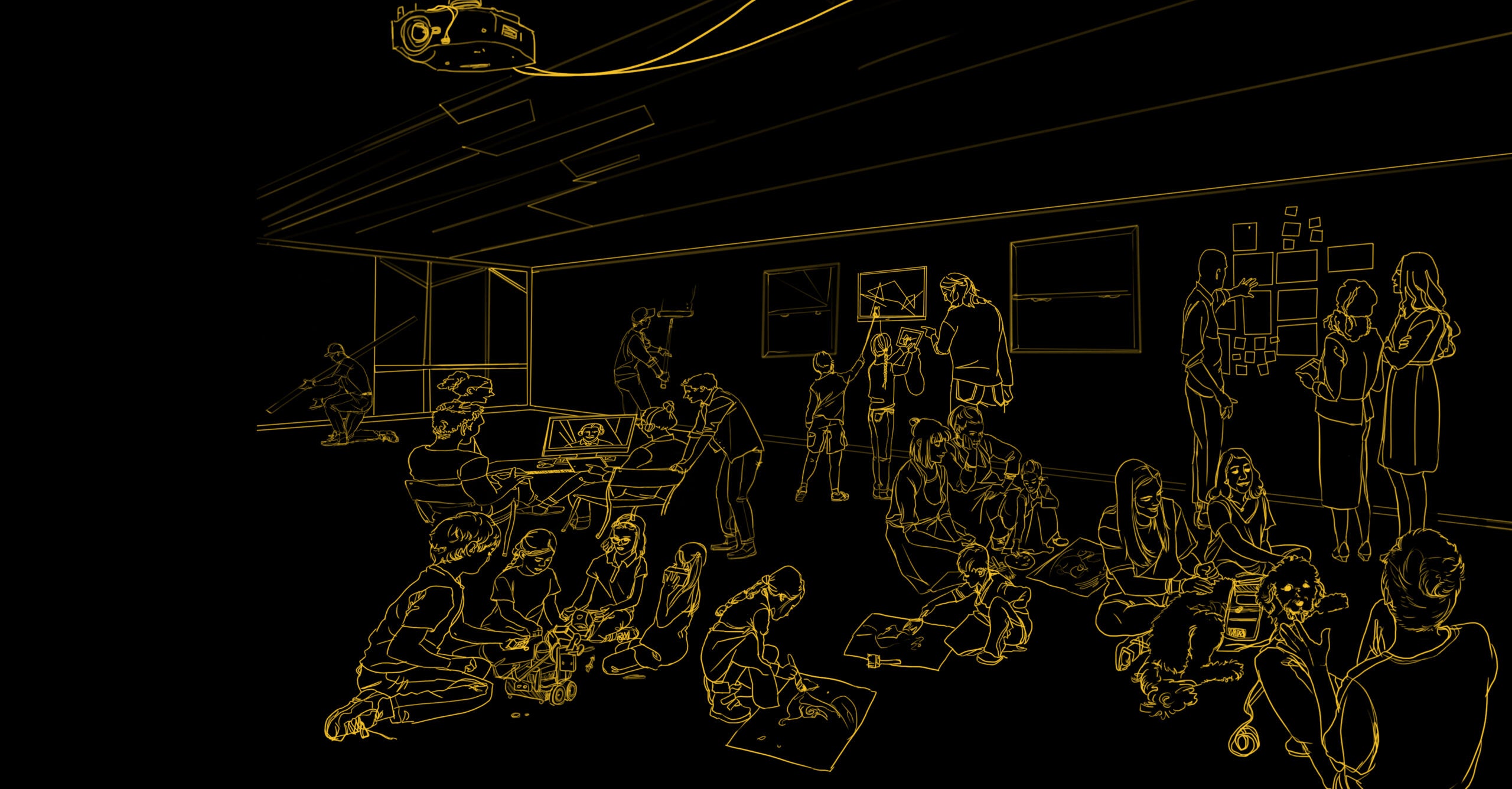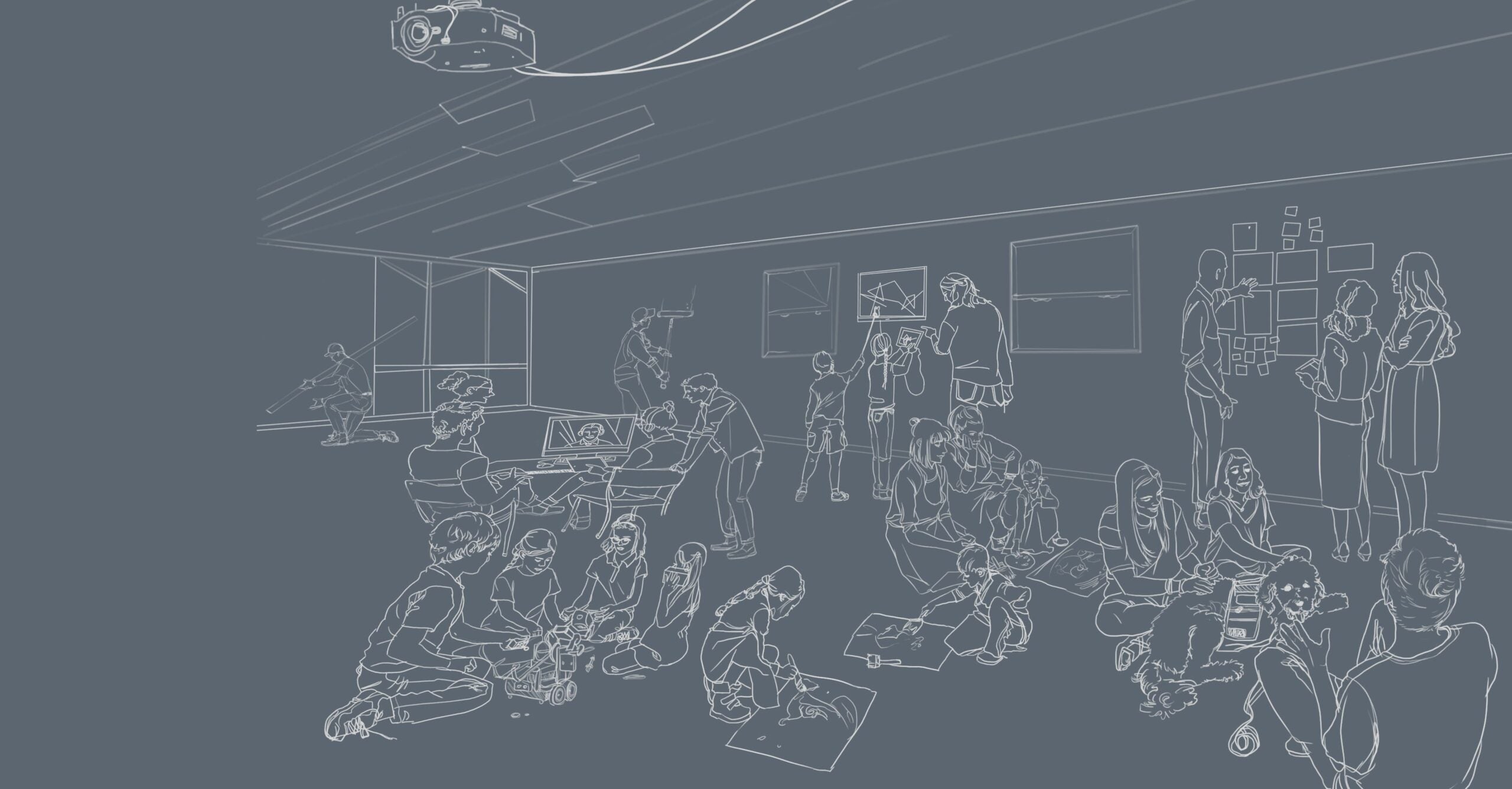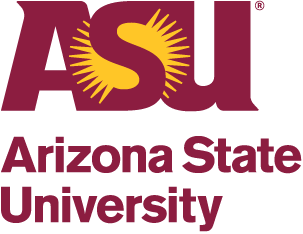Resource Type: School model

Westwood High School: Spotlight on the Schedule
At Westwood High School in Mesa, Ariz., educator teams guide the learning of 9th- and 10th-grade students. For the 2024–2025 academic year, Westwood transitioned from a traditional six-period schedule to an eight-period block schedule. This resource explores their innovative approach to restructuring instructional time.

Westwood High School: School Profile
Westwood High School in Mesa, Ariz., serves approximately 3,200 students in grades 9–12. This resource explores Westwood’s implementation of the Next Education Workforce model, highlighting their teaming structures and their approaches to innovation, coaching and schedule.

Mountain View High School: School Profile
At Mountain View High School, each core team of educators collectively supports 90–120 students. Core teams are composed of three to four educators, each of whom specializes in one or two content areas.

Mountain View High School: Spotlight on the Schedule
All 9th-grade teachers at Mountain View High School, located in Mesa, Ariz., are members of educator teams. Each core team of educators serves 90–120 students and includes three to four content area specialists. Explore how they organize their time with students.

Dynamic student groupings at Stevenson Elementary (Kindergarten)
Explore some of the ways an educator team grouped and regrouped 100 students over the course of a single day.

Dynamic student groupings at Mountain View High School
Explore how 100 ninth grade students are supported by a core educator team that includes a Spanish teacher, biology teacher and a dual-certified English and world history teacher.

Dynamic student groupings at Skyline High School
Explore some of the ways an educator team grouped and regrouped 100 students over the course of a single day.

Driving Academic Progress
Learn more about how one school system leveraged bus drivers as literacy tutors between driving shifts.

Community Circles
When a child enrolls at Jefferson Elementary, they are assigned to a community circle composed of at least one child from each grade level. Explore this resource to learn more about the program and its impact on learning for students and for staff.

Literacy Accelerators
Two to four times per week, Skyline High School teacher academy students assume the role of community educator at their feeder school, Stevenson Elementary.

Medical Innovations
To gain an understanding of a variety of medical conditions and how they affect the people who face them, the 4–6 grade teaching team assembled ten community educators to participate in interviews with their students.

Dynamic student groupings at Paulo Freire
How Paulo Freire’s team of educators grouped and regrouped 68 middle school students over the course of a day.

Dynamic student groupings at Kyrene de las Manitas
At Kyrene de las Manitas, teams of educators incorporate dynamic student groupings into a shared roster of students.

Dynamic student groupings at Stevenson Elementary (5-6th)
Explore some of the ways an educator team grouped and regrouped 100 students over the course of a single day.

Using collaborative tools to implement data-driven flexible grouping
Explore how educator teams use cloud-based spreadsheets to fluidly and transparently group students by interest and skill.

5 tips for creating an inclusive secondary school learning model
Leverage special educators’ knowledge and skills to increase the effectiveness of educator teams.

Kyrene de las Manitas Innovation Academy: Spotlight on the schedule
Kyrene de las Manitas Innovation Academy in Tempe, Arizona serves about 400 students in Grades K–7. In this resource, explore the schedule and the school’s implementation of a Next Education Workforce model.

Kyrene de las Manitas Innovation Academy: School spotlight
Kyrene de las Manitas Innovation Academy is committed to engaging students in a dynamic learning environment that promotes academic excellence and prepares them to be innovators and leaders of tomorrow. In this resource, you’ll learn how they’re implementing a Next Education Workforce model.

Kyrene de las Manitas Innovation Academy: Learning space layout
At Kyrene de las Manitas Innovation Academy, about 400 students in Grades K–7 in multi-aged grade bands work with core teams of up to six educators: one teacher executive designer, two team teachers and one to three teacher candidates. Read on to learn about key elements of their learning space.

Smith Junior High: Spotlight on the schedule
Smith Junior High is located in Mesa, Arizona and serves about 900 students in grades 7-8. Each core educator team serves about 150 students and includes certified teachers with expertise in a specific content area one of whom serves as the lead teacher for the team. In this resource, you’ll view an example schedule at a glance, as well as three sample student schedules.

Smith Junior High: School profile
Smith Junior High is located in Mesa, Arizona, and serves about 900 students in grades 7-8. Each core educator team serves about 150 students and includes certified teachers with expertise in a specific content area, one of whom serves as the lead teacher for the team. In this resource, you’ll find out how they’re implementing a Next Education Workforce model.

Mock Trial
Activating a lawyer for unit planning support is a great example of a community educator contributing to the distributed expertise of a team. Learn how.

Living Library
The Living Library brought more than 35 community educators — from stay-at-home parents to investment bankers — to connect with high school students struggling to see the importance of learning math.

Deeper and personalized learning at Stevenson Elementary
Hear from Stevenson Elementary School students about the school’s approach to student-centered learning, including student voice and choice in learning paths.

Stevenson’s team-based model
Hear from Stevenson Elementary School principal Krista Adams about educator teams’ dynamic approach to supporting students.

Student-selected support
In an effort to shift the ownership of learning from educator to student, SPARK School at Kyrene de las Manitas has implemented a system for students to reflect on their learning and progress, identify the academic support they need and schedule time to meet with the appropriate educator(s). This resource guides educator teams through steps to implementing student-selected support.

10 Tips for planning team-based deeper learning
The educator team at Kyrene de las Manitas Innovation Academy co-plans project-based units that support deeper learning. The 10 tips appearing in this document are drawn from their approach to planning. To get started, consider how your team might implement these tips.

The Creighton Academy: Learning space layout
The Creighton Academy in Phoenix, Arizona serves about 300 students in grades K–6. Every student is a member of a covey: a multi-age group of 55–60 students. Students work with educators specific to their coveys and educators who work across coveys. In this resource, you’ll see the layout of their learning space.

The Creighton Academy: Spotlight on the schedule
The Creighton Academy in Phoenix, Arizona serves about 300 students in grades K–6. Every student is a member of a covey: a multi-age group of 55–60 students. Students work with educators specific to their coveys and educators who work across coveys. In this resource, you’ll explore their schedule.

The Creighton Academy: School profile
The Creighton Academy in Phoenix, Arizona serves about 300 students in grades K–6. Every student is a member of a covey: a multi-age group of 55–60 students. Students work with educators specific to their coveys and educators who work across coveys. Here, you’ll learn how they’re implementing a team-based model.

Sousa Elementary School: Multi-age team learning space layout
At Sousa Elementary School in Mesa, Arizona, an educator team consisting of one lead teacher, three certified teachers, one special educator and three MLFC residents supports a multi-age group of 104 first and second graders. In this resource, you’ll see the layout of their learning space.

Sousa Elementary School: Spotlight on the schedule
At Sousa Elementary School in Mesa, Arizona, an educator team consisting of one lead teacher, three certified teachers, one special educator and three MLFC residents supports a multi-age group of 104 first and second graders. In this resource, you’ll explore their schedule.

Riverview High School: Learning space layout
Riverview High School serves 90–120 students in grades 7–12. Many of these students have left their assigned district schools due to disciplinary reasons or are transitioning out of juvenile detention or residential treatment centers. In this resource, you’ll see the layout of their learning space.

Stevenson Elementary: Learning space layout
At Stevenson Elementary School, 75 third graders work with a core team of educators that includes a lead teacher, certified teachers and MLFC residents. In this resource, you’ll see the layout of their learning space.

Whittier Elementary: Learning space layout
At Whittier, approximately 170 students in grades 4–6 will be part of multi-age learning communities called “houses.” Each house includes about 85 students and is guided by an educator team. In this resource, you’ll see the layout of their learning space.

Westwood High School’s Academy Teams: Learning space layout
Approximately 900 ninth grade students at Westwood High School in Mesa, Arizona are distributed across six Academy Teams. In this resource, you’ll see the layout of their learning space.

SPARK School educators work as a team
This clip features four educators from SPARK School. In it, they describe the impact of teaming with distributed expertise on both educators and students.

SPARK School invites experts to the classroom

SPARK School implements deeper and personalized learning

SPARK School: School profile
At SPARK School at Kyrene de las Manitas, 120 students in multi-aged grade bands (third through fifth grades) work with a core team of six educators: one teacher executive designer, two certified teachers and three teacher candidates. The prototype school-within-a-school was developed during a design process collaboratively led by the Kyrene School District and ASU’s MLFC Design Initiatives. In this resource, you’ll find out how they’re implementing a Next Education Workforce model.

SPARK School: Spotlight on the schedule
At SPARK School at Kyrene de las Manitas, 120 students in multi-aged grade bands (third through fifth grades) work with a core team of six educators: one teacher executive designer, two certified teachers and three teacher candidates. The prototype school-within-a-school was developed during a design process collaboratively led by the Kyrene School District and ASU’s MLFC Design Initiatives. In this resource, you’ll explore their schedule.

SPARK School: Learning space layout
At SPARK School at Kyrene de las Manitas, 120 students in multi-aged grade bands (third through fifth grades) work with a core team of six educators: one teacher executive designer, two certified teachers and three teacher candidates. The prototype school-within-a-school was developed during a design process collaboratively led by the Kyrene School District and ASU’s MLFC Design Initiatives. In this resource, you’ll see their learning space layout.

Whittier Elementary: School profile
In Fall 2020, Whittier Elementary in Mesa, Arizona will create two team-based learning communities with 170 students in grades four through six. Each “house” will include 85 students and will be guided by an educator team comprising three certified teachers and two MLFC teacher candidates. In this resource, you’ll find out how they’re implementing a Next Education Workforce model.

Whittier Elementary: Spotlight on the schedule
In Fall 2020, Whittier Elementary in Mesa, Arizona will create two team-based learning communities with 170 students in grades four through six. Each “house” will include 85 students and will be guided by an educator team comprising three certified teachers and two MLFC teacher candidates. In this resource, you’ll explore their schedule.

Whittier Elementary: COVID addendum
Whittier Elementary in Mesa, Arizona serves 4th through 6th-graders in a single multi-grade “house.” Together, six content area teachers (two of whom serve as lead teachers for the team), one special educator and four MLFC residents support 160 students. The team launched in Fall 2020, in the middle of the COVID-19 pandemic. In this resource, you’ll find out how they have adapted their planned instructional model while still taking a Next Education Workforce approach to working as a team and supporting their students.

SPARK School: COVID addendum
At SPARK School at Kyrene de las Manitas, students in multi-aged grade bands (3rd through 5th grades) work with a core team of six educators: one teacher executive designer, two certified teachers and three teacher candidates. In this resource, you’ll find out how the team at SPARK School has adapted their instructional model as a result of the COVID-19 pandemic while still prioritizing deeper and personalized learning for the students they serve.

Stevenson Elementary: Spotlight on the schedule
Stevenson Elementary School is a Title I school located in Mesa, Arizona that takes a dynamic approach to serving about 700 students in preschool through 6th grade. The school’s Next Education Workforce model wraps teams of educators around students in grades K-6 with the goal of providing deeper and personalized learning. In this resource, you’ll explore their schedule.

Stevenson Elementary: School profile
Stevenson Elementary School is a Title I school located in Mesa, Arizona that takes a dynamic approach to serving about 700 students in preschool through 6th grade. The school’s Next Education Workforce model wraps teams of educators around students in grades K-6 with the goal of providing deeper and personalized learning. In this resource, you’ll find out how they’re implementing a Next Education Workforce model.
Stevenson Elementary 3rd grade team profile
Stevenson Elementary School is a Title I school located in Mesa, Arizona that takes a dynamic approach to serving about 700 students in preschool through 6th grade. The school’s Next Education Workforce model wraps teams of educators around students in grades K-6 with the goal of providing deeper and personalized learning.

Teams and Distributed Expertise
Principal of Stevenson Elementary School Krista Adams shares how taking a teaming approach counters loneliness, empowers educators, and results in a better experience for both educators and students.

Hiring for Next Education Workforce models
Copper Trails principal Stacy E. Ellis shares how her criteria for hiring new educators changed as a result of teams adopting a Next Education Workforce model.

The benefits of teaming for students & educators
Mountain View School kindergarten lead teacher Danielle Ashenbrener describes why Next Education Workforce models are great for both students and educators.

The impact of teaming on the role of the school leader
Krista Adams talks about how her role as principal of Stevenson Elementary School has shifted as her school has adopted a Next Education Workforce model.

Benefits of Teaming: Support, Complementary Strengths, and Multiple Mentors
In this clip, MLFC Resident Jordan Dick describes what she sees as the benefits of working on a team of educators with distributed expertise.

The importance of embracing vulnerability in building a healthy team culture
Here, MLFC Resident Jordan Dick describes three benefits of teaming for Teacher Candidates placed in Next Education Workforce models.

